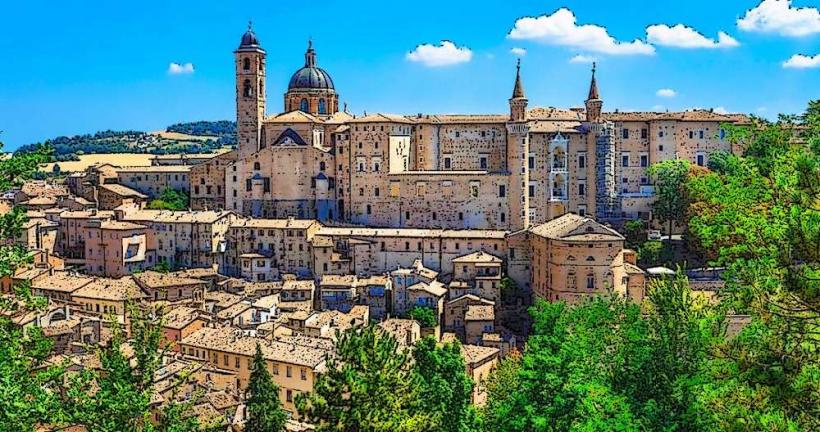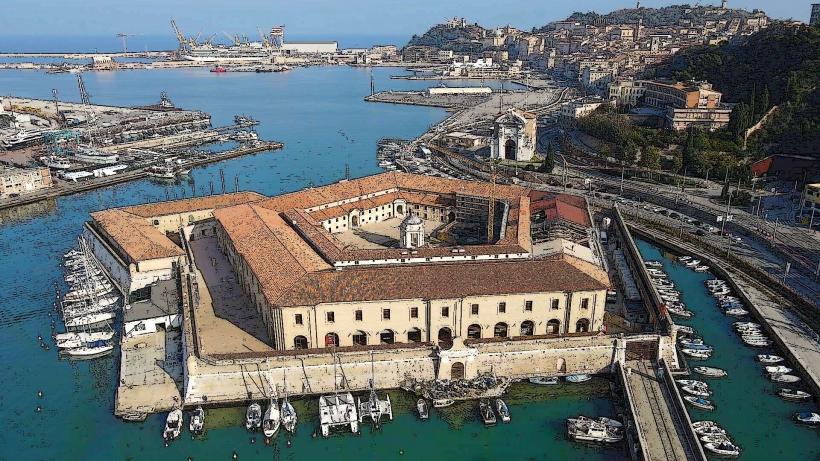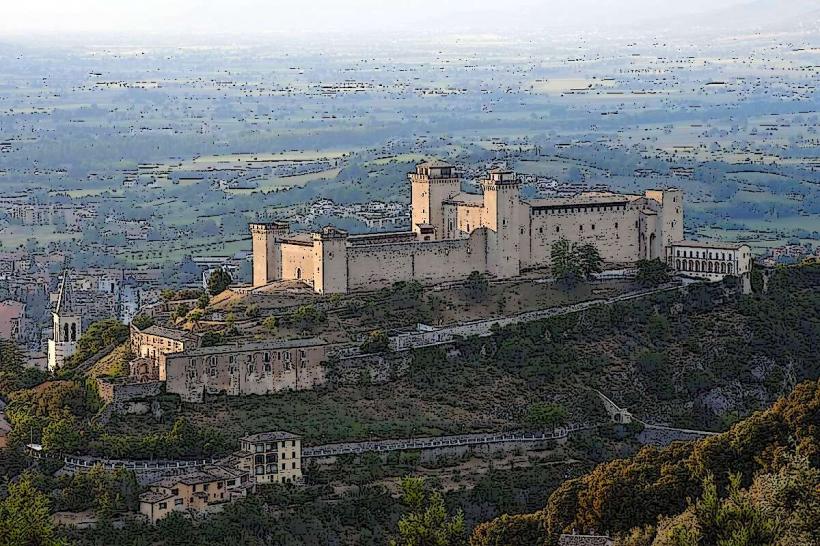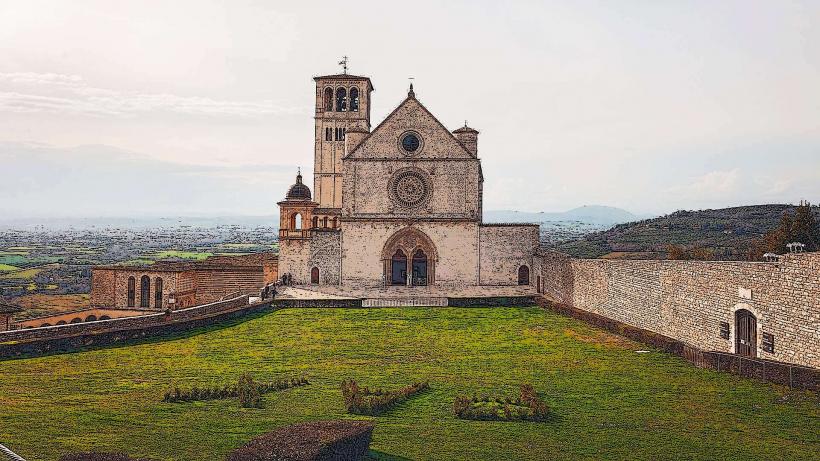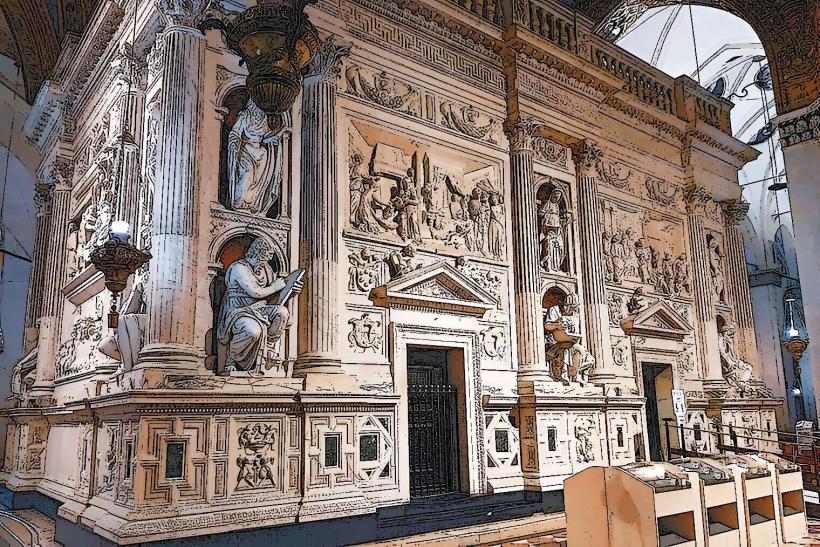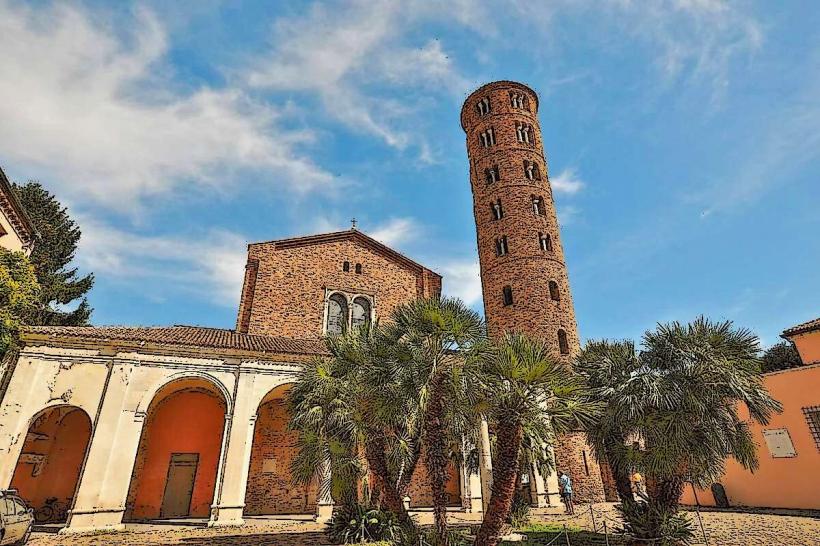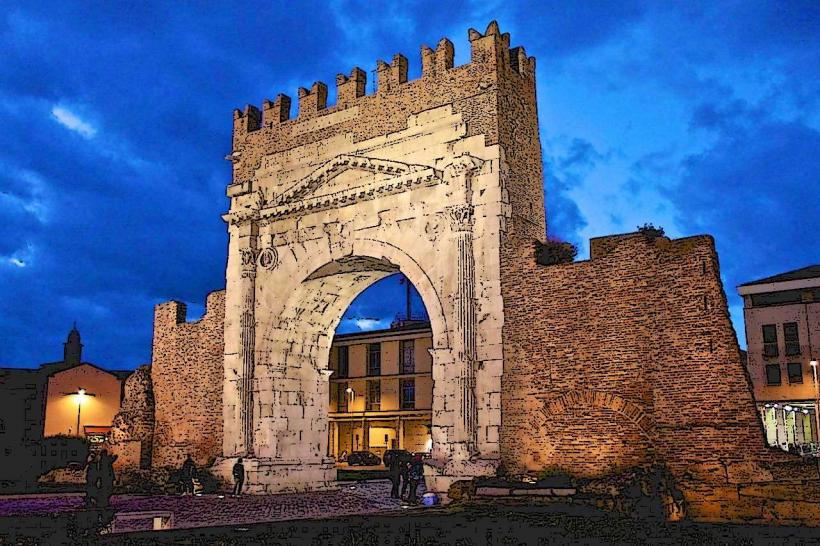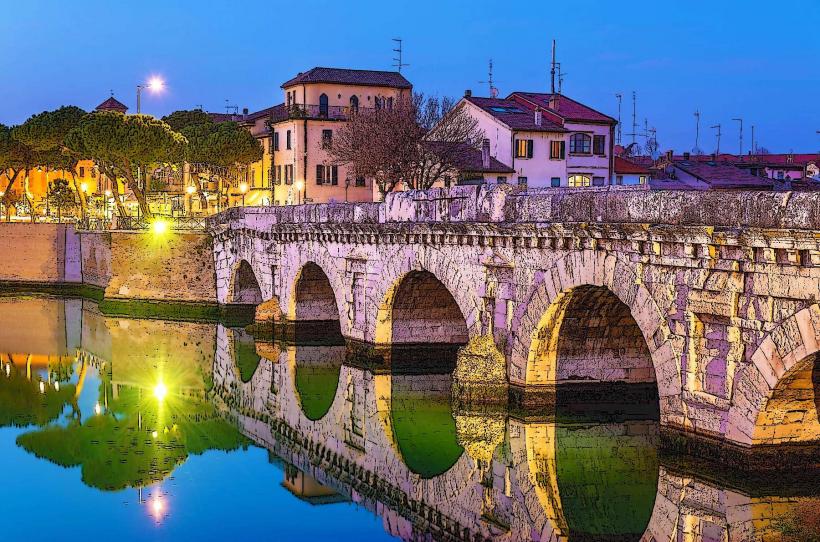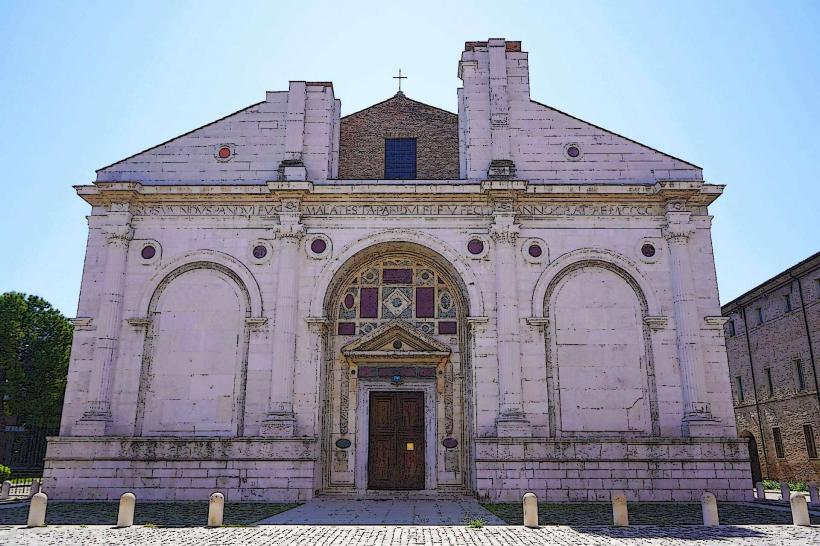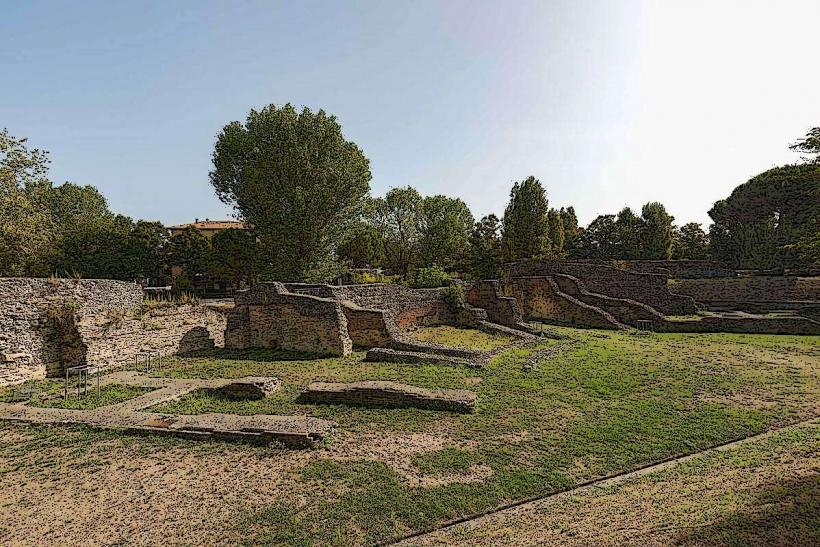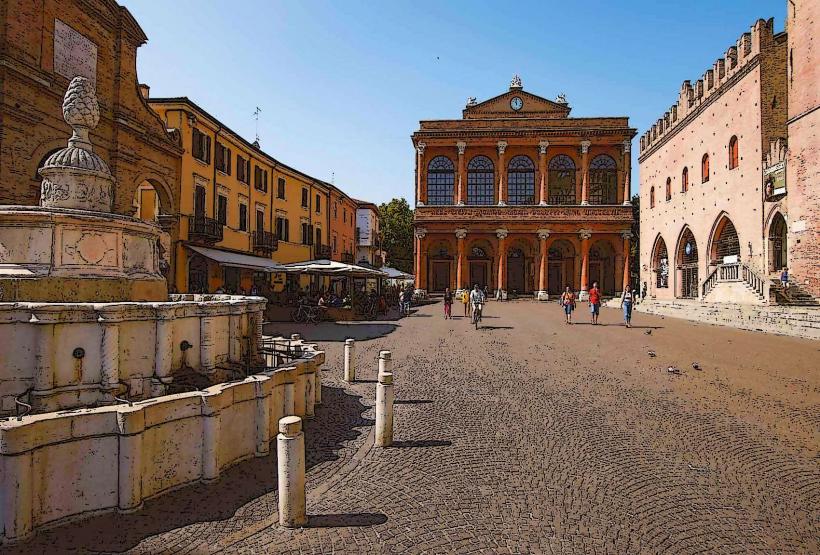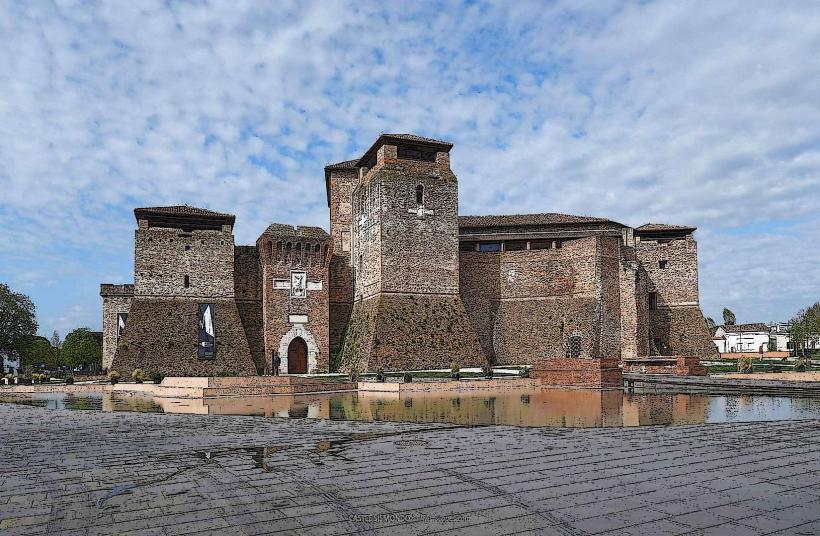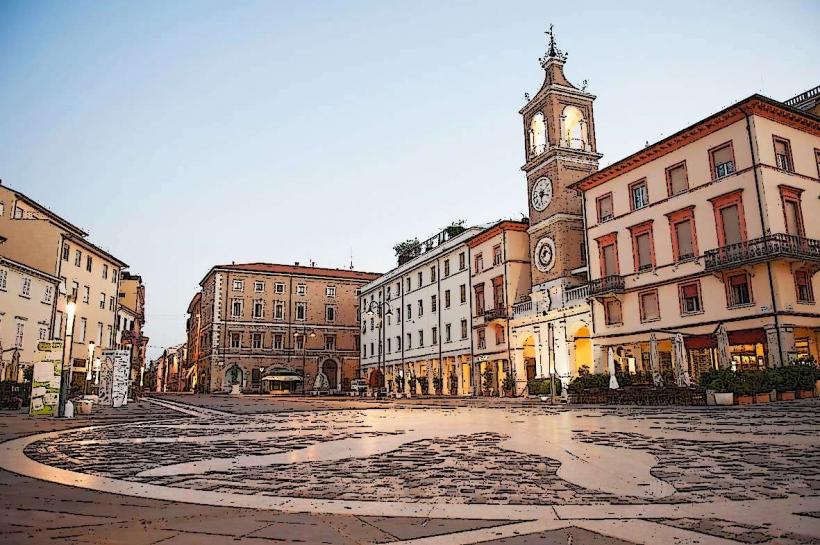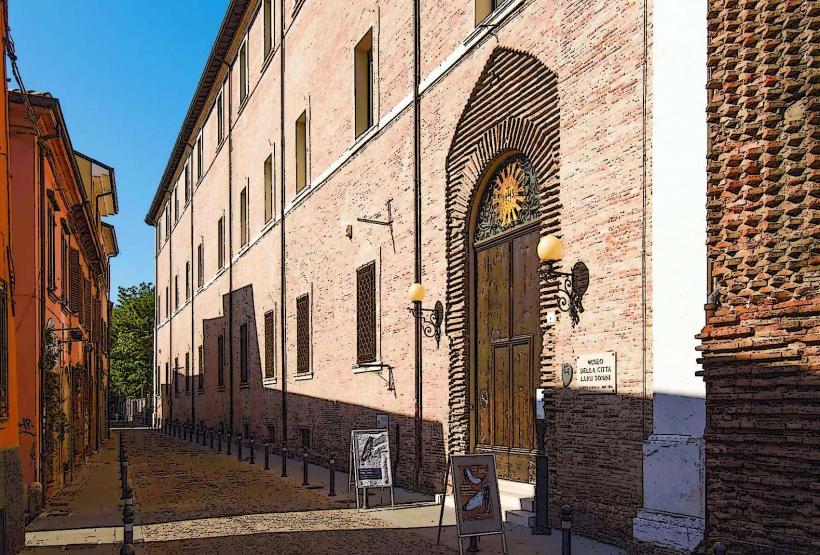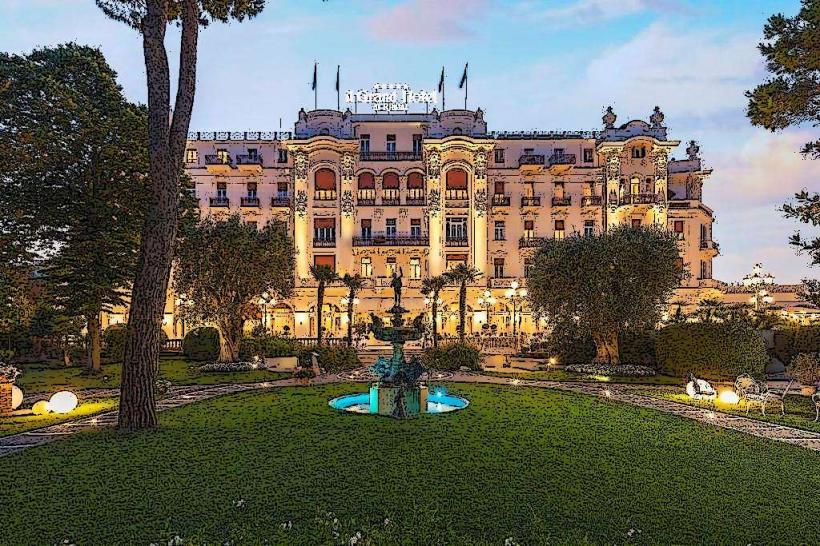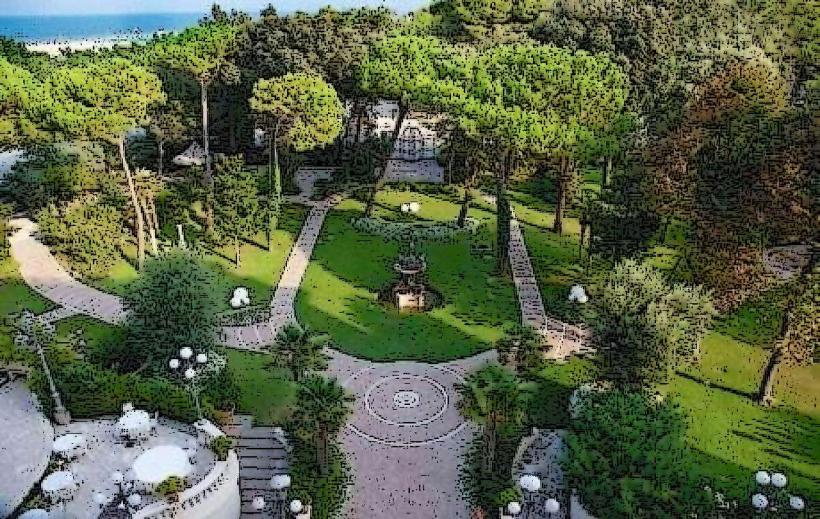Information
Landmark: Domus del ChirurgoCity: Rimini
Country: Italy
Continent: Europe
Domus del Chirurgo (The Surgeon’s House) is an extraordinary archaeological site located in Rimini, Italy. It offers an exceptional glimpse into Roman life, specifically focusing on the daily life of a wealthy Roman family and the practice of medicine in the ancient city. The site is particularly well-known for its well-preserved mosaics and the discovery of a Roman surgeon's tools, which shed light on medical practices during the Roman Empire.
1. Historical Background
- Discovery and Excavation: The Domus del Chirurgo was discovered in the late 1980s during construction work in Rimini’s historic center, specifically on Via L. Ginanni. Excavations revealed a large Roman residential building (or domus) dating from the 1st to 2nd centuries AD. The house belonged to a wealthy individual, likely a physician or someone with close ties to the medical profession, as suggested by the numerous surgical instruments found on-site.
- Roman Medical Practice: The presence of surgical instruments in the home suggests that the owner was involved in the practice of medicine, possibly a physician or a surgeon, which was a respected profession in Roman society. This discovery provides valuable insight into the medical knowledge and techniques of the time, as well as the living conditions of a professional Roman family.
- Location in Ancient Rimini: The Domus del Chirurgo was part of the bustling Roman city of Ariminum, a key settlement along the Via Flaminia, the Roman road that connected Rome to the Adriatic coast. The house’s location within the city reflects its wealth and importance.
2. Architectural Features
- Layout of the Domus: The house itself is a well-preserved example of Roman domestic architecture. It consists of several rooms arranged around a central courtyard. The central area, known as the atrium, would have been the focal point of the house, with rooms extending off it. The rooms were likely used for both private living and business, which would be typical for a wealthy family in Roman times.
- Mosaics and Decorations: One of the most striking features of the Domus del Chirurgo is its mosaic floors, which are considered some of the best-preserved examples of Roman mosaics. The mosaics are rich in geometric patterns and feature intricate depictions of animals, mythological scenes, and daily life. These mosaics not only show the artistic achievements of the period but also reflect the owner’s wealth and status.
- Surgical Instruments: The discovery of a collection of surgical instruments, such as scalpels, forceps, and other medical tools, in the house’s vicinity is one of the most important aspects of this site. These tools, along with a small stone table likely used for operations, suggest that the owner was indeed a practitioner of medicine, specifically surgery. The presence of these tools also provides valuable evidence of Roman surgical practices.
- Artifacts and Household Items: In addition to the surgical instruments, numerous other artifacts were discovered in the Domus, including pottery, glassware, and coins, which offer insight into the daily life of the people who lived there. These items reflect both the personal and professional aspects of Roman life in Ariminum.
3. The Surgeon’s Role and Medical Practices
- Surgical Tools and Medical Knowledge: The presence of surgical instruments in the Domus del Chirurgo provides rare evidence of Roman medical practice, particularly in surgery. Roman surgeons were skilled in a variety of medical procedures, including the treatment of fractures, eye surgery, and even plastic surgery. The tools discovered at the site are believed to have been used for these purposes, showing that Roman medicine was quite advanced for its time.
- Roman Medicine and Surgery: Roman surgeons were often skilled in treating wounds, fractures, and other ailments, particularly those associated with the military. The tools found at the Domus del Chirurgo suggest that the owner may have been involved in more specialized medical procedures, possibly even performing surgeries on wealthy individuals. This provides an interesting glimpse into the medical practices of ancient Roman society and the role of surgeons in it.
- Medical Education: The presence of medical tools also suggests that there may have been an element of medical education or training taking place in the domus, as it was common for wealthy Roman families to pass on specialized knowledge to apprentices or children, particularly in professions like medicine.
4. Mosaics and Artistic Value
- Geometric Patterns and Symbolism: The mosaics found in the Domus del Chirurgo are known for their complexity and vividness. They feature intricate geometric patterns that were typical of Roman mosaic art, as well as depictions of animals, gods, and everyday life. These mosaics not only served decorative purposes but also symbolized the wealth and status of the homeowner.
- Significance of the Mosaics: The mosaics are one of the most important aspects of the Domus del Chirurgo. They offer insight into Roman artistry, aesthetics, and domestic decoration. The detailed craftsmanship of these mosaics reflects the skill of Roman artisans and the cultural importance placed on such decorative art forms in Roman society.
5. Visitor Experience
- Museum and Exhibition: The Domus del Chirurgo is now a part of Rimini’s archaeological museum complex. The remains of the house, along with the mosaics, surgical instruments, and other artifacts, are displayed in a dedicated exhibition space. Visitors can view these remarkable findings and learn more about the life of ancient Romans, particularly those involved in medicine and surgery.
- Educational Value: The site serves as an educational resource for those interested in ancient history, Roman medicine, and archaeology. It offers a unique opportunity to explore the intersection of daily life, art, and science in the Roman Empire, with a special focus on the practice of medicine.
- Guided Tours: The museum and the Domus del Chirurgo offer guided tours that explain the significance of the archaeological finds. These tours delve into the history of the house, its architectural features, and the role of surgery in ancient Roman society.
6. Nearby Attractions
- Piazza Cavour and Castel Sismondo: The Domus del Chirurgo is located near Piazza Cavour and Castel Sismondo, two of Rimini’s most important historical landmarks. Visitors can easily combine a trip to the Domus with visits to other nearby sites such as the Arco d'Augusto and the Ponte di Tiberio, which highlight Rimini's rich Roman and medieval heritage.
- Rimini's Archaeological Sites: Rimini is home to numerous other archaeological sites that showcase its Roman past. The Domus del Chirurgo complements the city’s collection of Roman relics, helping to paint a fuller picture of ancient life in Rimini.
7. Conclusion
The Domus del Chirurgo offers a fascinating and rare glimpse into Roman domestic life and medical practice. The discovery of surgical instruments and the beautifully preserved mosaics makes it one of Rimini's most important archaeological sites. This site not only enriches our understanding of Roman medicine but also provides a deeper insight into the lives of wealthy Romans, highlighting their daily activities, their professional roles, and the artistic achievements of the time. It is a must-visit destination for history, archaeology, and art enthusiasts in Rimini.

